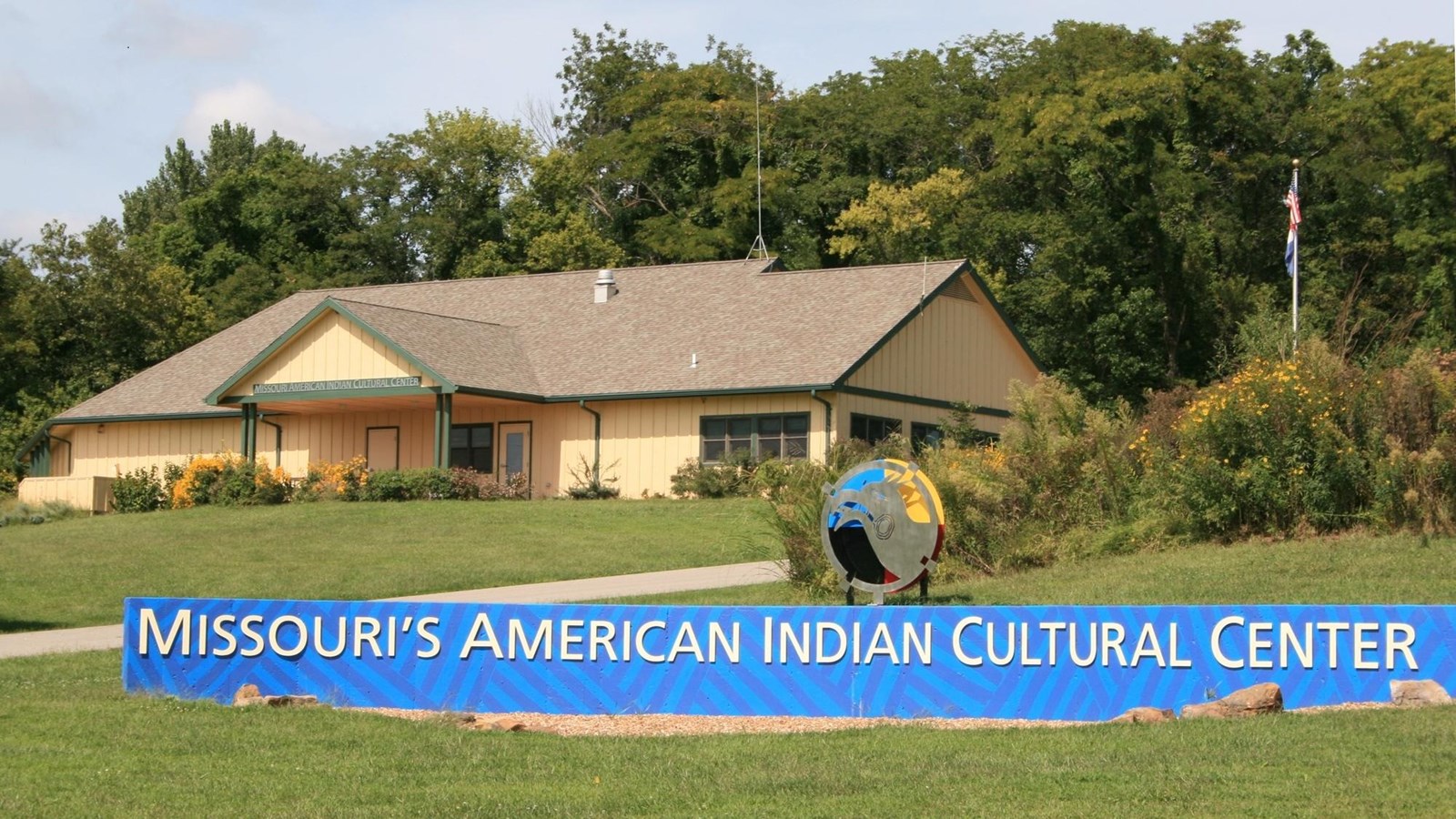Last updated: May 18, 2021
Place
Annie & Abel Van Meter State Park and Missouri's American Indian Cultural Center

Courtesy U.S. National Parks
Audio Description, Automated Entrance, Electrical Outlet/Cell Phone Charging, Gifts/Souvenirs/Books, Grill, Historical/Interpretive Information/Exhibits, Information, Information - Ranger/Staff Member Present, Information Kiosk/Bulletin Board, Parking - Auto, Picnic Shelter/Pavilion, Picnic Table, Playground, Restroom, Restroom - Accessible, Restroom - Seasonal, Shelter/Cabin, Tactile Exhibit, Toilet - Flush, Toilet - Vault/Composting, Trailhead, Trash Dumpster, Trash/Litter Receptacles, Water - Drinking/Potable, Wheelchair Accessible, Wheelchairs Available
Lewis and Clark NHT Visitor Centers and Museums
This map shows a range of features associated with the Lewis and Clark National Historic Trail, which commemorates the 1803-1806 Lewis and Clark Expedition. The trail spans a large portion of the North American continent, from the Ohio River in Pittsburgh, Pennsylvania, to the mouth of the Columbia River in Oregon and Washington. The trail is comprised of the historic route of the Lewis and Clark Expedition, an auto tour route, high potential historic sites (shown in black), visitor centers (shown in orange), and pivotal places (shown in green). These features can be selected on the map to reveal additional information. Also shown is a base map displaying state boundaries, cities, rivers, and highways. The map conveys how a significant area of the North American continent was traversed by the Lewis and Clark Expedition and indicates the many places where visitors can learn about their journey and experience the landscape through which they traveled.
For many centuries, the area surrounding the Great Bend of the Missouri was home to the Missouri Indians. They hunted and fished the lush land and bountiful waters. Over time, the area was home to encampments, burial mounds, and at least one village, the remnants of which can still be seen. Today, the site is part of the Annie & Abel Van Meter State Park.
It was here in 1804 that Meriwether Lewis and William Clark greeted the natives and exchanged foodstuffs. Once the largest population of native peoples in the area, Clark noted in his journal that the majority of them had been wiped out by diseases like smallpox and cholera. At the time of Lewis and Clark’s visit, there were fewer than 400 members of the Missouri tribes left. No longer an independent nation and dealing with raids from the Sac and Fox tribe, the survivors eventually left the area to join with the Otoes, Little Osage, Kansa, and Ioway tribes.
The Annie & Abel Van Meter State Park park boasts over 1,000 acres of trails, freshwater marshes, lush forests, and camping. The Missouri's American Indian Cultural Center is also located within the park and features exhibits detailing the nine tribes that inhabited the region, namely the Otoe-Missouria, Osage, Delaware, Ioway, Ilini-Peoria, Kanza, Kickapoo, Sac and Fox, and Shawnee. Murals and artifacts show visitors what life was like in the 19th-century, as well as the impact and long-lasting effects that European exploration had on the tribes. A 10-minute video also gives an overview of the area’s geology and the settlement of the area by the Vanmeter family and development of the park. Trails wind through the Oumessourit Natural Area, leading visitors through freshwater marshes and bottomland and upland forests.
For more information, call (660) 886-7537 or visit https://mostateparks.com/park/annie-and-abel-van-meter-state-park.
